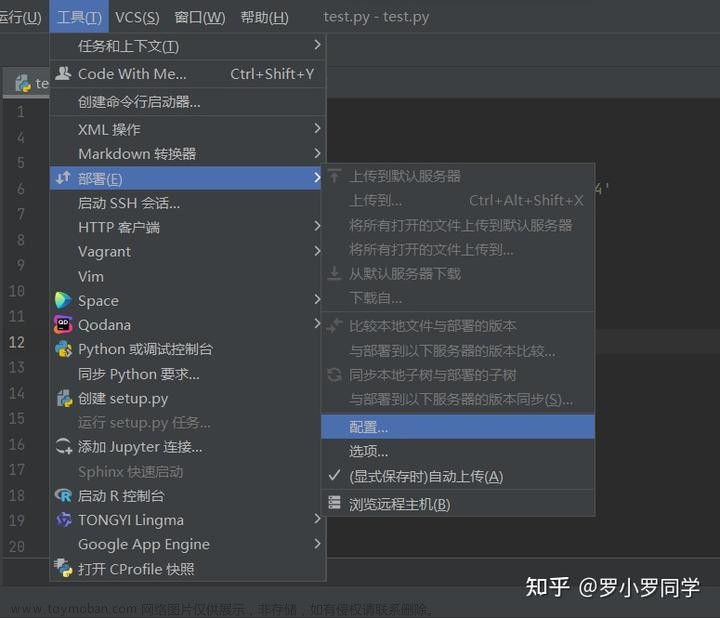摘要
在前面的两篇文章,我们主要是通过Upload组件和Image组件,真正的做到了设计器和后端服务之间的数据传递。
有了这个例子,应该比较清楚,对于低代码项目的服务端,它主要做的是一个抽象的数据存储。
因为正常做开发,后端主要是对某个字段的数据进行存储,例如姓名,年龄等。但是对于低代码的后端,它的存储没有具体到某个字段,也没有具体的数量,它是和设计器里面的字段进行关系映射。
当然,这是后话,目前我们能做的,就是说如何在我们的项目里面,可以创建数据库的表,例如我创建一张学生表,创建一张教师表。用于后面我们拖拽页面的时候,作为数据存储的地方(当然具体怎么用,我们后面再说)。
当下,我们需要把数据库的动态操作给做出来。我们需要完成的事情有:
- 添加数据库表
- 获取全部数据库表
- 删除数据库表
这里因为数据库的操作可能比较频繁,所以建议读者下载一个可视化操作数据库的软件。我这里使用的是Studio 3T Free for MongoDB。

1.实现创建实体的接口
首先,我们在src下新增和数据库表相关的模块:

现在我们想一下,我们创建的数据库表应该在哪里,其实我们就可以放在localData这个数据库里面,但是因为我们之前这里有存放页面信息的数据库,所以localData数据库中的全量表,并非全都是通过这个模块创建的。
所以我们需要有一张表来记录,我们通过可视化建表的方式,创建的数据库表有哪些。

OK,现在我们可以实现创建数据库表的接口了,创建表我们需要做两件事情:
- 创建一张新的数据库表
- 将数据库表的ID放在Data-Base表中
创建一张数据库表需要的数据结构是什么样子的呢?
我们需要数据库表的名字,数据库表的编码,数据库表的Schema。
数据库表的Schema:代表的是这个表需要什么字段,比如一张学生表需要学生姓名,学生学号,学生年级等。学生姓名是String类型,学生年龄是Number类型。而用来描述学生表信息的,就是学生表的Schema。为了后面方便叙述,我们统称数据库表为实体
所以我们在dto.ts, sechema.ts和interface.ts中,可以写出创建实体需要的数据结构了:
export class createEntity {
readonly entityName: string
readonly entityCode: string
readonly entitySchema: Object
}
xin-builder-server2\src\data-base\data-base.interface.ts
export interface Entity extends Document {
readonly entityName: string
readonly entityCode: string
readonly entitySchema: Object
}
xin-builder-server2\src\data-base\data-base.schema.ts
import { Schema } from 'mongoose';
export const EntitySchema = new Schema({
entityName: { type: String, required: true },
entityCode: { type: String, required: true },
entitySchema: {type: Object, required: true}
});
有了数据结构之后,我们开始编写创建实体的方法,来到service中:
xin-builder-server2\src\data-base\data-base.service.ts
import { Injectable } from "@nestjs/common";
import { InjectModel } from "@nestjs/mongoose";
import mongoose, { Model,Schema } from 'mongoose'
import {createEntity} from './data-base.dto'
import { Entity } from "./data-base.interface";
import { EntityInfo } from "./data-base.dto";
const DBRootModule = mongoose.createConnection('mongodb://127.0.0.1/localData');
@Injectable()
export class EntityService {
constructor(@InjectModel('Entity') private readonly EntityModule:Model<Entity>){}
async addEntity(body: createEntity): Promise<void> {
const DBRootModule = mongoose.createConnection('mongodb://127.0.0.1/localData');
await this.EntityModule.create(body)
DBRootModule.model(body.entityCode,new Schema(body.entitySchema),body.entityCode);
}
}
await this.EntityModule.create(body): 在entities表中,加入当前新建实体的信息。
DBRootModule.model(body.entityCode,new Schema(body.entitySchema),body.entityCode):
就是创建一张新的数据库表。
来到controller中:
xin-builder-server2\src\data-base\data-base.controller.ts
import { Body, Controller, Post } from "@nestjs/common";
import {EntityService} from './data-base.service'
import { createEntity, EntityInfo } from "./data-base.dto";
import { ApiTags, ApiOperation } from '@nestjs/swagger'
@Controller('entity')
@ApiTags('实体管理')
export class EntityController {
constructor(private readonly EntityService: EntityService){}
@Post('addEntity')
@ApiOperation({summary: '创建实体'})
async addEntity(@Body() createEntity: createEntity){
return {
code: 200,
data: await this.EntityService.addEntity(createEntity),
message: 'Success.'
};
}
}
最后来到module中:
xin-builder-server2\src\data-base\data-base.module.ts
import { Module } from "@nestjs/common";
import { EntityController } from "./data-base.controller";
import { EntityService } from "./data-base.service";
import { MongooseModule } from '@nestjs/mongoose';
import { EntitySchema } from "./data-base.schema";
const EntitySchemaTable = MongooseModule.forFeature([{ name: 'Entity', schema: EntitySchema }]);
@Module({
imports: [EntitySchemaTable],
controllers: [EntityController],
providers: [EntityService]
})
export class EntityModal {}
这样我们创建实体的接口就完成了。
2.实现删除实体和获取实体列表的接口
来到service中,我们写一下获取实体列表和删除实体的方法:
删除接口也需要做两件事:
- 删除entities中的对应信息
- 删除对应的数据库表
async getEntityList(): Promise<Entity []> {
const entityList = await this.EntityModule.find();
return entityList
}
async delEntityItem(body: EntityInfo): Promise<void> {
if(!body.entityCode){
return;
}
await this.EntityModule.deleteOne({entityCode: body.entityCode});
DBRootModule.dropCollection(body.entityCode)
}
在来到controller中,我们实现一下这两个方法的调用:
@Post('getEntityList')
@ApiOperation({summary: '获取实体列表'})
async getEntityList(){
return {
code: 200,
data: await this.EntityService.getEntityList(),
message: 'Sucess'
}
}
@Post('delEntityItem')
@ApiOperation({summary: '删除实体'})
async delEntityItem(@Body() EntityInfo: EntityInfo){
return {
code: 200,
data: await this.EntityService.delEntityItem(EntityInfo),
message: 'Sucess'
}
}
最终我们可以在Swagger文档进行测试一下:

这里,我们就实现了数据库表的添加,查询,和删除了。文章来源:https://www.toymoban.com/news/detail-836564.html
相关的代码提交在github上:
https://github.com/TeacherXin/XinBuilderServer2
commit: fix: 第四节:实现添加,查询,删除实体的接口文章来源地址https://www.toymoban.com/news/detail-836564.html
到了这里,关于从零实现一套低代码(保姆级教程)【后端服务】 --- 【21】实现数据库的动态建表等接口的文章就介绍完了。如果您还想了解更多内容,请在右上角搜索TOY模板网以前的文章或继续浏览下面的相关文章,希望大家以后多多支持TOY模板网!














